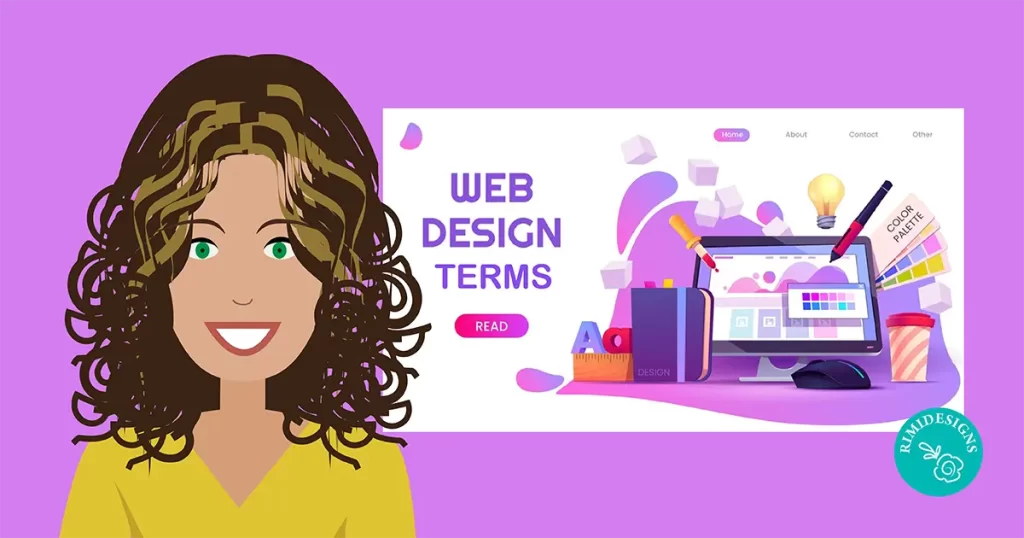
20 Web Design Terms You Need to Know
Whether you’re a seasoned web developer or just a beginner in the world of web design, understanding the key terms and concepts is crucial. Staying updated can give you a significant edge.
Here’s a comprehensive list of 20 web design terms you need to.
1. HTML (Hypertext markup language)
HTML is the foundational language used to create the structure of web pages. It defines elements like headings, paragraphs, links, images and other content that make up a website. Every web page you see is built using HTML.
2. CSS (Cascading style sheets)
CSS is used to style and layout web pages. While HTML structures content, CSS is responsible for the visual presentation, including colors, fonts and positioning. It allows developers to separate content from design, making sites more maintainable.
3. JavaScript
JavaScript is a programming language that adds interactivity to websites. It can update and change both HTML and CSS, control multimedia, animate images and much more. It’s a vital part of modern web development, enabling dynamic content and responsive user interfaces.
4. Responsive design
Responsive design ensures that websites look and function well on a variety of devices and screen sizes. This is achieved through flexible grids, layouts, images, and CSS media queries. With mobile usage on the rise, responsive design is more important than ever.
5. UX (User experience)
User experience encompasses all aspects of a user’s interaction with a website. Good UX design focuses on creating websites that are easy to use, efficient and enjoyable. It involves research, usability testing, and an understanding of user needs and behaviors.
6. UI (User interface)
User interface design is closely related to UX but focuses specifically on the visual elements that users interact with. This includes buttons, icons, spacing, typography and colour schemes. A well-designed UI enhances the overall user experience.
7. Wireframe
A wireframe is a low-fidelity visual representation of a web page’s layout and structure. It outlines the placement of elements such as headers, images and navigation menus without detailed design. Wireframes are used to plan the structure and flow of a website.
8. Prototype
A prototype is a high-fidelity, interactive version of a web page or app. Unlike wireframes, prototypes can simulate how the final product will function. They are used for testing and refining user interactions before full-scale development.
9. CMS (Content management system)
A CMS is a software application that allows users to create, edit and manage website content without needing advanced technical skills. Popular CMS platforms include WordPress, Joomla and Drupal. They provide a user-friendly interface for managing websites.
10. SEO (Search engine optimisation)
SEO involves optimising web pages to rank higher in search engine results. This includes using relevant keywords, creating high-quality content and ensuring a website is technically sound. Good SEO increases visibility and drives organic traffic to a website.
11. API (Application programming interface)
APIs allow different software systems to communicate with each other. In web design, APIs can be used to integrate third-party services, such as payment gateways, social media feeds and data from other sites, into your website.
12. Framework
A framework is a pre-written set of code that developers can use to streamline the development process. Common web design frameworks include Bootstrap for CSS and React for JavaScript. They provide standardised, reusable components that can speed up development.
13. Accessibility
Accessibility in web design ensures that websites are usable by people with disabilities. This includes designing for screen readers, providing keyboard navigation and ensuring content is understandable and operable by everyone, regardless of their abilities.
14. Favicon
A favicon is a small icon associated with a website, typically displayed in the browser tab. It helps with brand recognition and improves the overall user experience by making it easier to identify open tabs.
15. SSL certificate
SSL (Secure sockets layer) certificates encrypt data transferred between a user’s browser and the website, ensuring secure communication. Websites with SSL certificates display “https” in their URL, indicating a secure connection. It’s crucial for protecting user data and improving SEO.
16. Back-end development
Back-end development refers to the server-side of a website. It involves databases, server logic and application functionality that users don’t see but are essential for the website to function. Languages commonly used for back-end development include PHP, Python and Ruby.
17. Front-end development
Front-end development involves the client-side of a website, focusing on what users interact with directly. This includes everything from layout and design to interactivity and navigation. Front-end developers use HTML, CSS and JavaScript to create visually appealing and functional websites.
18. Version control
Version control systems, like Git, track and manage changes to code. They allow multiple developers to collaborate on a project without overwriting each other’s work, providing a history of changes and the ability to revert to previous versions if necessary.
19. Sitemap
A sitemap is a file that lists all the pages of a website, providing a blueprint of its structure. It helps search engines understand the organisation of your website and can improve SEO. There are two types: XML sitemaps for search engines and HTML sitemaps for users.
20. Web hosting
Web hosting is a service that allows individuals and organisations to make their websites accessible on the internet. Web hosts provide the technologies and resources needed for the website to be viewed online.
Conclusion
Understanding these essential web design terms can significantly enhance your ability to create effective, user-friendly and visually appealing websites. Whether you’re managing your own website or collaborating with a team, this knowledge forms the foundation of successful web design and development.



